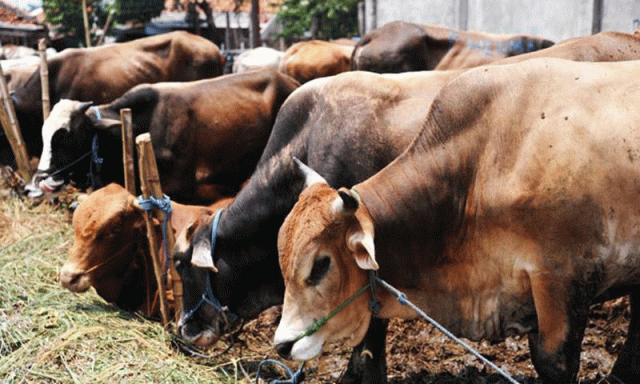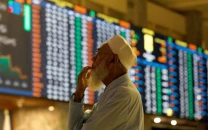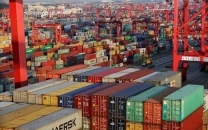Milk, beef production: Pakistan taking a leaf out of China, Brazil’s book
Though country’s output has increased, room for improvement remains

PHOTO: AFP
As per the Economic Survey of Pakistan, the population has increased from 136.40 million in 1999 to 188.02 million in 2014, a rise of 37.8%.
During the same period, combined population of cattle and buffaloes has registered a growth of 70.4% to reach 74.3 million in 2014. On the other hand, consumption of milk and beef has risen 65.4% and 96% in the years up to 2014, to reach 41.133 and 1.887 million tons respectively.
This 15-year trend reflects a higher productivity in beef production, with a relatively lower growth in milk consumption.
Development: Livestock sector can boost growth, says CM
It appears that Pakistan is doing rather well in terms of food security in the areas of milk and beef production. After all, we are able to enhance our capacity much above the population growth rate to meet some of the dietary requirements.
In the last 15 years, investors have poured money into developing state-of-the-art dairy farms and abattoirs. Breeding techniques have improved and so have animal vaccinations.

Livestock-raising remains a crucial element in the rural economy. It plays a pivotal role in supplementing incomes of the farmers. And sustaining the livestock growth depends on the attainment of higher scales of production. With smaller endowments, an average farmer is not expected to reach enhanced livestock productivity on a standalone basis.
Reinvestment incentives
Here comes the critical economic linkage between large processors and holders of small livestock inventory. Companies like Nestle, Engro and other large milk processors have created enough reinvestment incentives for small farmers in the shape of being a captive milk buyer for large quantities.
Farmers and even urban entrepreneurs are putting money in animal farms with large herds. Market is basically driving this trend. We are seeing dairy and meat companies getting listed on local stock exchanges and Pakistan has gradually emerged as a net meat exporter in the global market.
Camel milk: Better research, marketing can enhance production, says experts
For global overview, take FAO figures for reference. Global population of cattle and buffaloes has increased from 1,465 million in 1999 to 1,677 million in 2014, a surge of 14.5%. Milk and beef production has risen at a rate of 36.6% and 18.5% to reach 737.617 and 67.706 million tons respectively.
Now in terms of growth, Pakistan has much surpassed the global trends in the livestock segments. However, there are players in global markets, whom Pakistan may focus to emulate for enhanced productivity.
Case studies
Cases in point are China in dairy production and Brazil in meat production. During the 1998-2013 period, China increased its milk production over three-fold from 9.460 million tons in 1998 to 38.720 million tons in 2013.
This enormous growth has come in the wake of extensive consolidation in the milk processing industry and various government incentives for livestock-raising. Chinese dairy companies are making overseas investments in securing their supply chain and diversifying the revenue base. Bright Foods, Synutra, Mengniu and Yili are some of the major Chinese dairy companies that have invested abroad.
Brazil has emerged as the top beef exporter in the world. Endowed with natural resources, the Brazilian government and its meat processing industry have collaborated in creating a conducive operating environment.
From grass-fed, the Brazilian meat industry has progressed to intensive feedlot farming to sustain its global beef leadership position. Brazilian beef production has grown at a rate of 67% between 1998 and 2013 to reach 9.675 million tons in 2013. Pakistan’s performance in the livestock segment in the last 15 years is to be commended. However, there exists ample space for improvement. It may look towards Chinese and Brazilian models to learn more on intensive livestock farming.
Local ingenuity and foreign collaboration will play a key role in boosting livestock productivity in the country. Food security is linked with investment in scaling farm outputs. Pakistan has the capacity and resources to bring the best in an area where it enjoys some sort of comparative advantage.
The writer is an entrepreneur based in China
Published in The Express Tribune, March 14th, 2016.
Like Business on Facebook, follow @TribuneBiz on Twitter to stay informed and join in the conversation.



















COMMENTS
Comments are moderated and generally will be posted if they are on-topic and not abusive.
For more information, please see our Comments FAQ